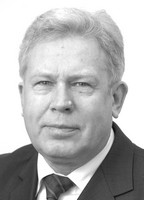Management of special physical training of high jumpers based on informative indicators of their condition
Фотографии:
ˑ:
Teoriya i praktika fizicheskoy kultury №6 2017, pp.66-69
Dr.Hab., Professor V.S. Bykov1
Dr.Hab., Associate Professor E.A. Cherepov1
PhD, Associate Professor Е.М. Yanchik1
PhD, Associate Professor V.Y. Tselishchev1
1Institute of Sport, Tourism and Service, South Ural State University, Chelyabinsk
Sports training management optimization involves the development and organization of an integrated control system by means of assessing sports results based on model characteristics reflecting the level of athletes’ sports skills.
Objective of the study was to determine the most informative indicators of special physical fitness of high jumpers of various qualifications.
The article presents various aspects of high jumpers’ physical fitness. Subject to the study were 2 groups of high jumpers: I Class athletes and Candidate Masters of Sport (Group 1); Masters of Sport and Masters of Sport of International Class (Group 2). Their level of special physical fitness was evaluated by such parameters as: speed, strength, speed-strength abilities, level of relaxation and tension in the thigh and calf muscles (myotonometry); we also analyzed the strength and temporal characteristics of tensodynamogram of the take-off after jumping off the ledge that was 90 cm high ("depth jumps"), and anthropometric characteristics. The study lasted two years and was carried out prior to the competitions held at Y. Lukoshevich Memorial. The study involved 29 athletes.
The analysis of the amplitude (strength and speed) characteristics of movements, obtained during the take-off phase after jumping off the ledge ("depth jumps") enabled to reveal the nature of their changes in athletes with various levels of physical fitness.
Keywords: integrated control, special training, speed-strength abilities, tensodynamometry, high jumpers.
References
- Bal'sevich V.K. Ontokineziologiya cheloveka [Human Ontokinesiology]. Moscow: Teoriya i praktika fizicheskoy kultury i sporta publ., 2000, 275 p.
- Verkhoshanskiy Y.V. Teoriya i metodologiya sportivnoy podgotovki: blokovaya sistema trenirovki sportsmenov vysokogo klassa [Theory and methods of sports training: block training system for highly-skilled athletes]. Teoriya i praktika fizicheskoy kultury, 2005, no. 4, pp. 2-14.
- Isaev A.P., Erlikh V.V., Kravchenko A.A. Sistemoobrazuyuschie regulyatornye zveniya gomeostaza lyzhnikov-gonshchikov molodezhnogo sostava sbornoy Rossii po lyzhnym gonkam na spetsialno-podgotovitelnom etape podgotovki [System-forming regulatory links of homeostasis of racing skiers of Russian youth cross country skiing team at special pre-season training stage]. Vestnik YuUrGU. Ser.: Obrazovanie, Zdravookhranenie, fizicheskaya kultura, 2013, vol.13, no. 4, pp. 38-47.
- Lubysheva L.I. Fizicheskaya i sportivnaya kultura: soderzhanie, vzaimosvyazi i dissotsiatsii [Physical and sports culture: content, interrelations and dissociations]. Teoriya i praktika fizicheskoy kultury, 2002, no.3, pp. 11-14.
- Platonov V.N., Zaporozhanov V.A. Teoreticheskie aspekty otbora v sovremennom sporte [Theoretical aspects of qualification in modern sports]. Otbor, kontrol i prognozirovanie v sportivnoy trenirovke. Sb. nauch. tr. [Qualification, control and prediction in sports training. Col. res. works] Kiev: KSIPhC publ., 1990, pp. 5-27.
- Platonov V.N. Teoriya periodizatsii sportivnoy trenirovki v techenie goda: istoriya voprosa, sostoyanie, diskussii, puti modernizatsii [Theory of periodization of sports training throughout the year: history of issue, state, discussions, ways of modernization]. Teoriya i praktika fizicheskoy kultury, 2009, no. 9, pp. 18 – 34.
- Khodykin A.V. Skorostno-silovaya podgotovka pryguna v vysotu [Speed-strength training in high jumping]. Izhevsk: IzhSTU publ., 1996, 224 p.
- Rybakov V.V., Ufimtsev A.V., Fedorov A.I., Akhmedzyanov M.N. Upravlenie sportivnoy podgotovkoy: teoretiko-metodologicheskie osnovaniya [Management of sports training: theoretical and methodological grounds]. Moscow: SportAkademPress publ.; Chelyabinsk: ChSU; ChSSEC UrD RAE publ., 2003, 480 p.



 Журнал "THEORY AND PRACTICE
Журнал "THEORY AND PRACTICE